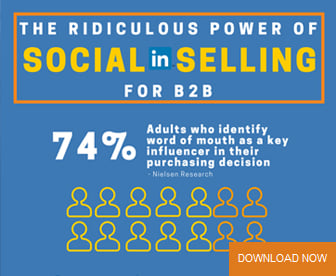Standalone E-Commerce Is So 2005: Why E-Commerce Today Needs to Be Woven Through the Fabric of the Customer Experience
The word “e-commerce” – the magic buzzword of the last decade – almost seems quaint today. When online buying was a cutting-edge thing, e-commerce was often measured separately from retail sales. Today, that seems a bit silly. Everybody and his grandmother shops online now, and it’s often one small element of a multichannel buying experience: ordering online, for example, and picking the item up at a retail location. This doesn’t mean that the business of buying online isn’t vital: it is, particularly as we head into the all-important holiday retail season. According to predictions by eMarketer, U.S. retail e-commerce holiday season sales will grow nearly 14 percent this year, and e-commerce will reach nine percent of total retail sales this season, or $79.4 billion, up from 8.3 percent last year.
What retailers and the businesses that partner with them need to understand, however, is that there are some very new considerations that need to be included in their e-commerce strategies. While e-commerce once meant a customer visiting a website on a home PC and clicking “buy,” this is no longer necessarily the case. E-commerce is just one part of an omnichannel customer engagement strategy. Other considerations include:
Blending brick and mortar with online channels. Pure Internet retailers like Amazon have it easy: there is no need for them to try and figure out where their online strategy should fit into a retail store plan. But for many businesses, it’s critical to optimize how customers might want to blend the experiences. Can a mobile app help them check stock or price-compare while they’re standing in the aisle of a retail store location? Can they order online and pick the item up at the store? Can they engage in a chat session with a customer representative while looking at merchandise if there’s no knowledgeable worker available in the store?
Mobile apps for better customer engagement. Speaking of mobile apps, there are two kinds of retailers today: those with great mobile apps and those with lousy mobile apps. Ideally, a mobile app should allow customers to engage in self-service, but it’s also critical that customers can escalate to a live help session (telephone or chat) within the mobile app. This way, the agent who picks up the session can see what the customer has done so far. If you force customers to exit the app and then cold-call a toll-free number, he or she will need to start all over again, which won’t endear your organization to that customer.

Security. “It couldn’t happen to us” becomes a fairly hollow promise when some of the largest and most respected retailers have had embarrassing security breaches with millions (if not billions) of dollars’ worth of negative fallout. If you’re asking customers to allow you to store any of their personal information, you become a steward of that data. Understand that there are plenty of people who are actively trying to take it from you. Home-grown solutions, or cobbled together systems that haven’t been designed for twenty-first century cybersecurity risks, are like putting a welcome mat out for hackers and identity thieves. Also keep in mind that many times, sensitive data isn’t hacked: it walks out the front door on a thumb drive with a disgruntled employee bent on getting revenge.
Social commerce. Social media, once a great place to share pictures of your kids or brag about your vacation, is increasingly becoming a marketplace. In the past year, Pinterest, Facebook, Instagram, Twitter and YouTube have all introduced “buy” or “shop now” buttons. How well retailers design and place their ads on these sites will dictate how often customers transition from social media into purchasing mode to take advantage of unique features like shopping with a friend online, or sharing purchases with social media buddies.
Customer data analytics. Analytics are everywhere today, and for very good reason. Analytics solutions built into marketing, sales or contact center platforms can help companies understand what their customers are looking at, what’s inducing the to buy (and what’s preventing them from buying), where they’re coming from and how high-quality the nature of their interactions has been.
If your e-commerce strategy was crafted in 2005, chances are good that it’s no longer serving either you or your customer. Include it as an important element of your overall omnichannel customer experience strategy, but keep in mind that going forward, e-commerce will always need to exist in a symbiotic relationship with every other customer channel you offer.
Edited by Erik Linask











